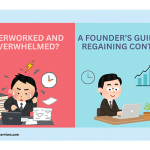Time is the most valuable resource in your business—but it’s also the one you’re most likely to waste.
Just like technical debt in software, time debt builds up when your workflows are patched together without structure. The result? Slow execution, scattered priorities, and an ever-growing list of unfinished tasks.
The fix isn’t another shiny tool—it’s building the right infrastructure. By combining Virtual Assistants (VAs) with AI in a coordinated system, you can offload repetitive work, scale operations, and reclaim your time for what really moves the needle.
This guide will show you exactly how to build a VA + AI workflow that delivers results without adding complexity.
1. Why Productivity Hacks Fail at Scale
The internet is flooded with “time-saving” tools—apps, automation scripts, AI plug-ins—all promising instant efficiency. But most are band-aids, not solutions.
They can speed up a single task but rarely fix the structural drag slowing your team down.
Example:
Real productivity gains come from reducing the number of decisions your team makes—not adding more tools to juggle. That’s where a VA + AI workflow comes in.
2. What Is a VA + AI Workflow?
A VA + AI workflow is a coordinated system where AI handles repetitive, rules-based work, and a VA manages the human context, decisions, and oversight.
AI excels at:
VAs excel at:
The power comes from using each for what they do best—AI for scale and speed, VA for context and quality control.
3. How It Works in Real Life
Here’s what a combined VA + AI workflow looks like:
You get speed + accuracy, without losing the human touch.
4. The Blueprint for an Execution-First Workflow
A VA + AI system only works if it’s designed to be autonomous and scalable—not dependent on your constant oversight.
Here’s the step-by-step process:
Step 1: Analyze Where Your Time Goes
Track your work for 3–5 days. Categorize each task as:
This shows exactly where you’re wasting time and what to offload.
Step 2: Separate AI Work from VA Work
Create two clear lanes:
Without this separation, your system becomes reactive and inefficient.
Step 3: Define the Handoffs
Spell out who (or what) takes over at each step. Examples:
Every task should have a clear ownership path so nothing stalls.
Step 4: Design for Autonomous Execution
The goal: Your VA + AI workflow should run without you micromanaging.
Ask yourself:
When your system runs on autopilot, you become a supervisor—not a bottleneck.
5. Mistakes to Avoid
Even a solid workflow can fail if you skip these:
Final Take: Turning Time Into a Scalable Asset
Time debt quietly kills productivity—especially for growing teams. The way to beat it isn’t another app; it’s building a system that combines AI speed with VA judgment.
Start by auditing where your time goes. Then structure your workflow so AI handles the volume, your VA handles the nuance, and both work together without constant oversight.
When done right, you’re not just “saving time”—you’re building a scalable execution engine that frees you to focus on the work that grows your business.



